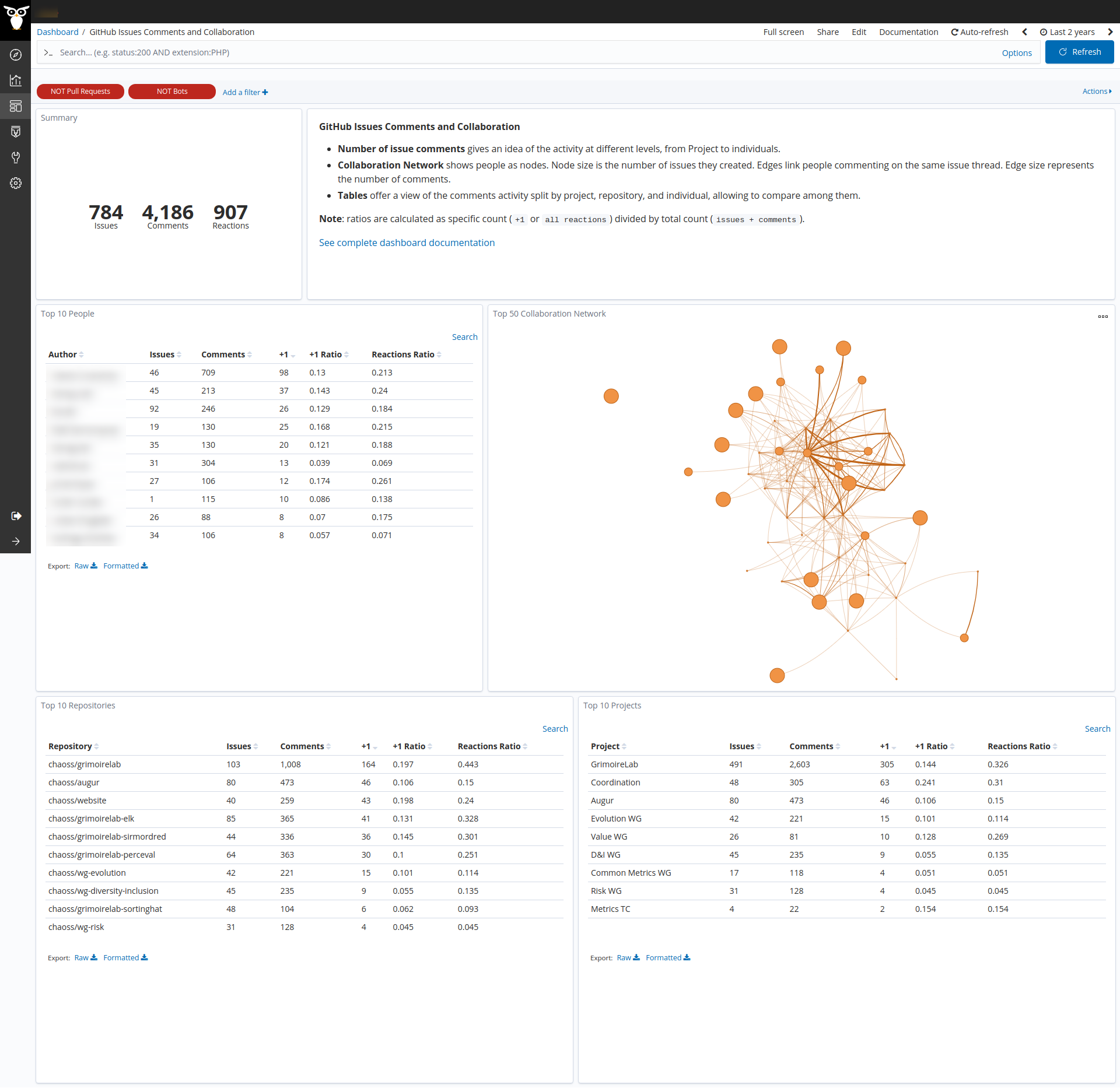GitHub Issues Comments and Collaboration
This dashboard focuses on collaboration among people. Its goal is providing insights about the most active and participative individuals. It also provides information split by repository and project in order to be able to compare data from a single person to data from the whole repository and project.
Collaboration is analyzed through the number of issues commented by a set of users. Thus we consider they are “collaborating” on that thread as they are sharing comments. As a simple way to measure these interactions we consider the more the messages written in that thread, the stronger the collaboration is.
- Summary: general numbers to give an idea about the amount of data taken into account given the current dashboard filters and time frame.
- Top 50 Collaboration Network: shows people as nodes (first 50).
- Node size is the number of issues they created.
- Edges link people commenting on the same issue thread.
- Edge size represents the number of comments.
- Top 10 People: this table split data by persons (first 10). Each row consists of:
- Issues: number of issues created by that person.
- Comments: number of comments created by that person.
- +1: number of
+1reactions received by issues or comments created by that person. - +1 Ratio: result of dividing the previous value by the total count of issues and comments created by that person.
- Reactions Ratio: same as
1 Ratiobut for all kind of reactions. Useful to compare to+1 Ratioand thus analyze the impact of people’s contributions.
- Top 10 Repositories: same as People table but split by repository (first 10).
- Top 10 Projects: same as People table but split by project (first 10).
Tables are here to allow to drill down on people’s contributions and understand their actual impact on the different repositories and projects. Nevertheless, these tables provide enough information for comparing GitHub issues activity on the different repositories and projects, what could be considered as a side use case.
Building the Dashboard: details about Index and Fields
This dashboard is built on top of github2_issues index. It is worth to mention that in GitHub everything
are issues, even pull requests, so issues corresponding to pull requests will appear in this index too.
To avoid counting them as issues, we filter out pull requests by means of a filter
named Not Pull Requests placed on top of the dashboard.
Files
To use this dashboard with your own GrimoireLab deployment you need to:
- Check
github2_issuesindex is available on your GrimoireLab instance (see grimoirelab-sirmordred documentation for details on how to deploy it). - Import the following JSON files using Kidash tool.
| Index Pattern | —– | Dashboard |
Command line instructions
Once you have the data in place, if you need to manually upload the dashboard execute the following commands:
kidash -e https://user:pass@localhost:443/data --import github2_issues-index-pattern.json
kidash -e https://user:pass@localhost:443/data --import github2_issues_comments_and_collaboration.json

Edit this doc